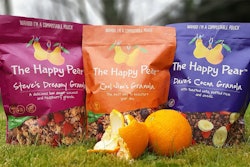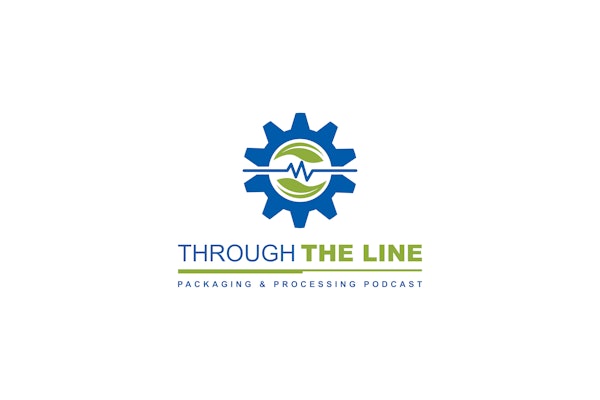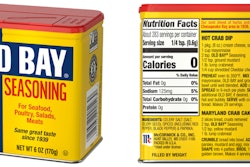A decade after launching the revolutionary PlantBottle plant-based, recyclable PET bottle, Dasani is taking the next step in the package’s evolution with a bottle that—along with other packaging innovations—will remove the equivalent of 1 billion virgin plastic bottles from the Coca-Cola supply chain over the next five years. In mid-August, Dasani announced that over the next year it plans to roll out a next-generation lineup of recyclable, renewable, and package-free options.
The key innovation is Dasani’s new 20-oz HybridBottle, a PET package made from 21% PlantBottle material, 30% recycled PET, and 49% virgin PET. The package will be the first of its kind in the U.S. when it launches in mid-2020. While Coca-Cola’s long-range goal is a 100% bio-PET bottle, until the technology is fully developed and scalable, Sneha Shah, Group Director, Packaging Innovation, Coca Cola North America, says Dasani wanted to move ahead in reducing the amount of virgin material used in its packaging by incorporating recycled content. “It’s a journey,” she says. “As new technologies become available and as the industry evolves, we will experiment and try new things.
“With the HybridBottle, we’re really focused on incorporating recycled PET. By doing this, we’re signaling that PET has great value in the market. We also hope it will inspire the development of the recycling infrastructure and recycling behavior amongst consumers.”
Indeed, Coca-Cola will need to stimulate an increase in recycling if it’s to meet its World Without Waste goals, which call for the company to make 100% of its packaging fully recyclable by 2025 and to produce bottles and cans with an average of 50% recycled material by 2030. According to Shah, 30% rPET for the HybridBottle was the limit, as “right now, there really isn’t enough recycled PET to go towards something like 100 percent rPET.” That’s why, she adds, the work Coca-Cola is doing to build the circular economy and encourage more recycling is so important.
As part of this work, beginning in fall 2019, Dasani will also be adding How2Recycle labels to all of its packaging to help educate and encourage consumers to recycle.
For now, the recycled material for its HybridBottle will be furnished by six new rPET suppliers selected for their close proximity to Dasani processing plants, reducing the water bottler’s total carbon footprint. Coca-Cola North America also brought on these new suppliers to ensure consistent quality and performance of the food-grade recycled PET material.
Another avenue Dasani is taking on its journey to reduce its virgin PET use is the introduction of a 16-oz aluminum bottle and an aluminum can in 12- and 16-oz sizes. These additions to its portfolio of more-sustainable solutions—the U.S. recycling rate for aluminum is 49%, Shah advises—will provide new options to meet differing consumer preferences and behaviors. Dasani will introduce the can in the fall in the Northeast and will expand distribution of the format to other regions in 2020; the aluminum bottle will hit shelves in mid-2020.
“As we launch the aluminum packaging, we’ll start to figure out where it fits in terms of what occasion a consumer might want to drink it in, and where it makes sense to have,” says Shah. “So this will be all about testing and learning.”
In fall 2019, Dasani will also roll out another, more sustainable packaging option: package-less water, in the form of its PureFill 2.0 water dispensing system. An evolution of its PureFill 1.0, piloted in late 2018, the system is based on Coca-Cola’s widely adopted FreeStyle beverage platform with micro-dosing technology. Through micro-dosing, consumers will be able to add flavors to the cold, filtered water, according to their taste preferences. Carbonation will also be an option.
Dasani plans to install 100 units in venues such as college campuses, workplaces, and recreational destinations, with consumers providing their own packaging or procuring one at POP. “We really haven’t fully vetted all the locations it could possibly go, but there’s certainly a great market opportunity in places where there isn’t a great filtered, branded offering that comes from a dispenser,” says Shah. “What’s great about the PureFill 2.0 is that it’s served chilled, and everything’s in one unit, including the flavors and the filtration unit. All you really need is water and electricity to get one of these things started. So there’s not really a huge barrier to where it could be placed.”
Last on Dasani’s list of innovations in the offing is the lightweighting of its 0.5-L PET bottle, with a reduction of 20% to 30% plastic material, while maintaining the bottle’s rigidity. This improvement, which will also reduce Dasani’s use of virgin PET, won’t happen overnight though; Shah says the timeline for completion of such a bottle design is two to three years. “We’ve already looked at where we can take weight out of the package,” she says, “but it takes some time for our supply chain to adopt a new design and implement it completely.”
Together, the HybridBottle, the aluminum can and bottle, the How2Recycle label, the PureFill system, and the lighter-weight PET bottle represent the largest sustainability initiative in the history of the Dasani brand. Said Dasani Brand Manager Lauren King at the time of the announcement, “It’s [the announcement] rooted in providing sustainable options for our consumers, while doubling down on our commitment to minimize our impact on the environment.
“Over the last decade, we’ve been on a journey to make Dasani more sustainable through new package design and innovation, and we are now accelerating these efforts in support of our company’s ambitious goals to significantly reduce packaging waste around the world by 2030,” she said. “While there is no single solution to the problem of plastic waste, the additional package and package-less options we are rolling out today mark an important next step in our effort to provide even more sustainable solutions at scale.”


























